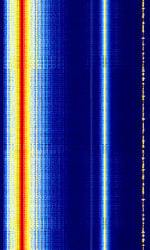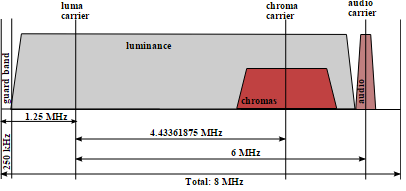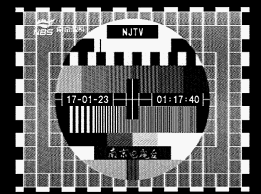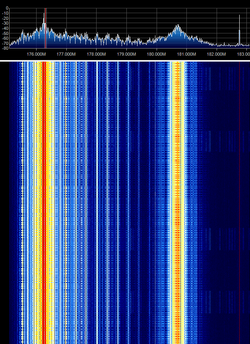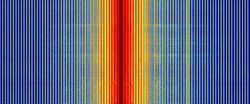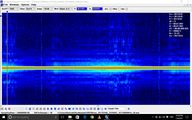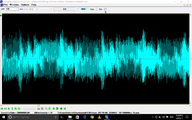PAL Broadcast
Phase Alternating Line (PAL) Analogue Television Broadcast. Now phased out in most of the world. Replaced by DVB-T. Used Quadrature Amplitude Modulation for transmitting video. Uses CCIRComité Consultatif International pour la Radio (Predecessor of the ITU-R) System B.
Has a Field Rate of 50 HzHertz (Hz), unit of frequency, defined as one cycle per second (1 Hz)., 625 lines per frame, and a Gamma of 2.8.
Format[edit]
Luma: Amplitude Modulation. The amplitude denotes the brightness on each scan line.
Chroma: Used an analog QAMQuadrature Amplitude Modulation system, where the amplitude denoted the saturation of color, and the phase denoted the hue. This uses the UV (YUV) color system.
Audio: Standard FMFrequency Modulation modulated audio.
In addition, there are multiple systems of PAL that are employed.
| PAL B | PAL G, H | PAL I | PAL D/K | PAL M | PAL N | |
|---|---|---|---|---|---|---|
| Transmission band | VHFVery High Frequency (30-300 MHz) | UHFUltra High Frequency (300-3000 MHz) | UHFUltra High Frequency (300-3000 MHz)/VHFVery High Frequency (30-300 MHz)* | VHFVery High Frequency (30-300 MHz)/UHFUltra High Frequency (300-3000 MHz) | VHFVery High Frequency (30-300 MHz)/UHFUltra High Frequency (300-3000 MHz) | VHFVery High Frequency (30-300 MHz)/UHFUltra High Frequency (300-3000 MHz) |
| Fields | 50 | 50 | 50 | 50 | 60 | 50 |
| Lines | 625 | 625 | 625 | 625 | 525 | 625 |
| Active lines | 576 | 576 | 576 | 576 | 480 | 576 |
| Channel bandwidth | 7 MHzMegaHertz (MHz) 10^6 Hz | 8 MHzMegaHertz (MHz) 10^6 Hz | 8 MHzMegaHertz (MHz) 10^6 Hz | 8 MHzMegaHertz (MHz) 10^6 Hz | 6 MHzMegaHertz (MHz) 10^6 Hz | 6 MHzMegaHertz (MHz) 10^6 Hz |
| Video bandwidth | 5.0 MHzMegaHertz (MHz) 10^6 Hz | 5.0 MHzMegaHertz (MHz) 10^6 Hz | 5.5 MHzMegaHertz (MHz) 10^6 Hz | 6.0 MHzMegaHertz (MHz) 10^6 Hz | 4.2 MHzMegaHertz (MHz) 10^6 Hz | 4.2 MHzMegaHertz (MHz) 10^6 Hz |
| Colour subcarrier | 4.43361875 MHzMegaHertz (MHz) 10^6 Hz | 4.43361875 MHzMegaHertz (MHz) 10^6 Hz | 4.43361875 MHzMegaHertz (MHz) 10^6 Hz | 4.43361875 MHzMegaHertz (MHz) 10^6 Hz | 3.575611 MHzMegaHertz (MHz) 10^6 Hz | 3.58205625 MHzMegaHertz (MHz) 10^6 Hz |
| Vision/Sound carrier spacing | 5.5 MHzMegaHertz (MHz) 10^6 Hz | 5.5 MHzMegaHertz (MHz) 10^6 Hz | 6.0 MHzMegaHertz (MHz) 10^6 Hz | 6.5 MHzMegaHertz (MHz) 10^6 Hz | 4.5 MHzMegaHertz (MHz) 10^6 Hz | 4.5 MHzMegaHertz (MHz) 10^6 Hz |
Samples[edit]
Frequencies[edit]
All over the VHFVery High Frequency (30-300 MHz) and UHFUltra High Frequency (300-3000 MHz) bands.
Decoding Software[edit]
- Hobby Level Software
Encoding Software[edit]
- Hobby Level Software
Video Examples[edit]
- Analogue PAL TV with RTL SDR (RTL2832) and TVSharp
- Reception of PAL/SECAM video using RTL-SDR & SDR#
